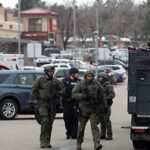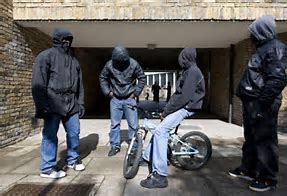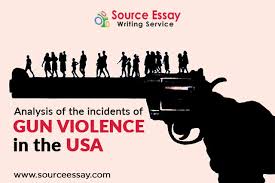Title: Understanding Street Crimes in the United States: Causes, Impacts, and Solutions
Introduction:
Street crimes in the United States represent a complex and multifaceted issue with significant social, economic, and political implications. From petty theft and vandalism to drug trafficking and violent assaults, these crimes pose serious challenges to public safety, community well-being, and the overall fabric of society. This essay aims to delve into the various aspects of street crimes in the U.S., exploring their underlying causes, impacts on individuals and communities, and potential solutions.

Understanding Street Crimes:
Street crimes encompass a wide range of illegal activities that occur in public spaces and often involve physical violence, property damage, or theft. Common examples include robbery, burglary, assault, drug dealing, vandalism, and prostitution. These crimes can occur in urban, suburban, and rural areas alike, affecting individuals of all ages, backgrounds, and socioeconomic statuses.
Causes of Street Crimes:
- Socioeconomic Factors: Poverty and economic inequality create environments where individuals may resort to crime as a means of survival or to address financial hardships. Lack of access to stable employment, affordable housing, and education can lead to feelings of hopelessness and desperation, driving some individuals to engage in illegal activities.
- Substance Abuse: Drug addiction and substance abuse are closely linked to street crimes, particularly crimes related to drug trafficking, distribution, and consumption. Substance abuse can impair cognitive function, increase impulsivity, and lower inhibitions, making individuals more susceptible to engaging in criminal behavior to support their addiction or fund their drug habits.
- Social Disorganization: Communities characterized by social disorganization, such as high levels of poverty, residential mobility, and family disruption, are more vulnerable to street crimes. Weak social ties and limited access to community resources can contribute to feelings of alienation and disengagement, creating an environment where criminal activity can thrive without effective social controls.
- Gang Involvement: Gangs often provide a sense of identity, belonging, and protection for marginalized youth who may feel disenfranchised from mainstream society. Gang members may engage in a range of criminal activities, including drug trafficking, extortion, robbery, and violent conflicts with rival gangs, perpetuating cycles of crime and violence within communities.
- Cultural Factors: Cultural attitudes and norms surrounding violence, masculinity, and criminal behavior can influence individuals’ decisions to engage in street crimes. Societal glorification of violence in media and entertainment can desensitize individuals to the consequences of criminal behavior and perpetuate harmful stereotypes about crime, race, and social class.

Impacts of Street Crimes:
- Individual Harm: Victims of street crimes may suffer physical injuries, psychological trauma, and financial losses, impacting their quality of life and well-being. The fear of victimization can also have long-lasting effects on individuals’ sense of safety and security, leading to heightened anxiety, hypervigilance, and avoidance behaviors.
- Community Disruption: Street crimes disrupt the social fabric of communities, undermining trust, cohesion, and social capital. High crime rates can deter investment, limit economic opportunities, and contribute to residential instability as residents seek safer environments elsewhere, further exacerbating social and economic inequalities.
- Economic Costs: Street crimes impose significant economic costs on society, including expenses related to law enforcement, criminal justice proceedings, victim assistance programs, and healthcare for crime-related injuries and trauma. Businesses may also incur losses due to theft, vandalism, and property damage, further straining local economies and communities.
- Cycle of Violence: Street crimes perpetuate a cycle of violence and retaliation, leading to escalating levels of conflict and harm within communities. Retaliatory violence and acts of revenge can fuel cycles of retribution and vendettas, creating an atmosphere of fear, distrust, and instability.
- Undermined Trust in Institutions: Persistent street crimes can undermine trust in law enforcement, criminal justice institutions, and government authorities. Communities plagued by crime may feel neglected or marginalized, leading to strained relations between residents and authorities and hindering efforts to address crime effectively through collaborative partnerships and community policing initiatives.
Solutions to Street Crimes:
- Community Policing: Implement community policing strategies that prioritize collaboration, communication, and problem-solving between law enforcement agencies and local communities. Building trust, fostering positive police-community relations, and addressing underlying community concerns can help prevent and address street crimes effectively through targeted interventions and community engagement efforts.
- Targeted Interventions: Develop targeted interventions that address the root causes of street crimes, such as poverty, substance abuse, and social disorganization. Invest in programs that provide economic opportunities, substance abuse treatment, mental health services, and community development initiatives tailored to the specific needs and challenges of affected communities.
- Crime Prevention Through Environmental Design (CPTED): Implement Crime Prevention Through Environmental Design (CPTED) principles to design and modify urban environments in ways that deter crime and enhance community safety. This may involve improving lighting, increasing natural surveillance, and implementing measures to control access and movement in public spaces, thereby reducing opportunities for criminal activity.

- Youth Outreach and Mentoring: Engage at-risk youth through outreach programs, mentoring initiatives, and youth development activities that provide positive role models, educational opportunities, and alternatives to criminal behavior. Investing in youth empowerment and skill-building programs can help divert young people away from street crimes and towards more constructive paths.
- Restorative Justice: Promote restorative justice approaches that prioritize repairing harm, addressing underlying conflicts, and promoting healing and reconciliation among victims, offenders, and communities. Restorative justice processes empower stakeholders to take an active role in resolving conflicts, repairing relationships, and preventing future crime by fostering accountability, empathy, and mutual understanding.
Criminal Profiling:
Criminal profiling is a technique used by law enforcement
agencies to identify characteristics, behaviors, and motives of offenders
based on crime scene evidence and behavioral analysis.
Profilers use a combination of psychological, criminological, and investigative techniques to develop profiles of potential suspects, including their likely age, gender, occupation, and personality traits. Criminal profiling can aid in narrowing down suspects, prioritizing investigative leads, and providing insights into offender behavior and motivations, ultimately aiding in the apprehension and prosecution of criminals.
Broken Windows Theory:
The Broken Windows Theory is a criminological theory that suggests
that visible signs of disorder and neglect in a community, such as broken
windows, graffiti, and litter, can contribute to increased levels of
crime and social disorder.
According to this theory, maintaining order and addressing minor signs of decay and disorder can help prevent more serious crimes from occurring by signaling to potential offenders that the community is actively monitored and cared for. Broken Windows policing strategies prioritize addressing low-level offenses and maintaining public order as a means of deterring more serious criminal activity and improving overall community safety.
Stop and Frisk Policies:
Stop and Frisk policies, also known as Terry stops or field interviews,
authorize law enforcement officers to detain, question, and pat down individuals
suspected of engaging in criminal activity or posing a threat to public safety.

These policies are often used as a proactive policing tactic to deter crime and remove illegal weapons and contraband from the streets. However, stop and frisk policies have been criticized for disproportionately targeting minority communities and contributing to racial profiling, civil rights violations, and erosion of trust between law enforcement and the communities they serve. Critics argue that stop and frisk policies are ineffective and discriminatory, while proponents contend that they are necessary tools for maintaining public safety and preventing crime.
Criminal Gangs:
Criminal gangs are organized groups of individuals who engage in illegal
activities such as drug trafficking, extortion, robbery, and violent crime for
monetary gain or social status.
Gangs typically have hierarchical structures, with leaders overseeing operations and enforcing rules through coercion and violence. Gangs often recruit vulnerable youth from marginalized communities, offering them a sense of belonging, protection, and identity in exchange for loyalty and participation in criminal activities. Gang-related violence and criminal activity can have significant social, economic, and public health consequences, contributing to high levels of crime, fear, and insecurity in affected neighborhoods.
White-Collar Crime:
White-collar crime refers to non-violent, financially motivated
offenses committed by individuals or organizations in positions of trust
or authority, typically in the course of their occupation or business activities.
Examples of white-collar crimes include fraud, embezzlement, insider trading, bribery, and money laundering. White-collar criminals often exploit loopholes in financial systems, manipulate accounting practices, or deceive investors and consumers for personal gain. Despite the absence of physical violence, white-collar crimes can have far-reaching consequences, including financial losses, damage to public trust and confidence, and erosion of corporate integrity and reputation. Prosecuting white-collar crimes can be challenging due to their complexity, reliance on paper trails and digital evidence, and the involvement of powerful individuals or institutions.

Conclusion:
Street crimes in the United States represent a complex and pervasive social problem with far-reaching implications for individuals, communities, and society as a whole. Addressing this issue requires a comprehensive approach that addresses the underlying causes of crime, promotes community empowerment and collaboration, and prioritizes prevention, intervention, and rehabilitation efforts. By working together to address the root causes of street crimes and build safer, more resilient communities, we can create a society where all individuals can live free from the threat of violence and crime


